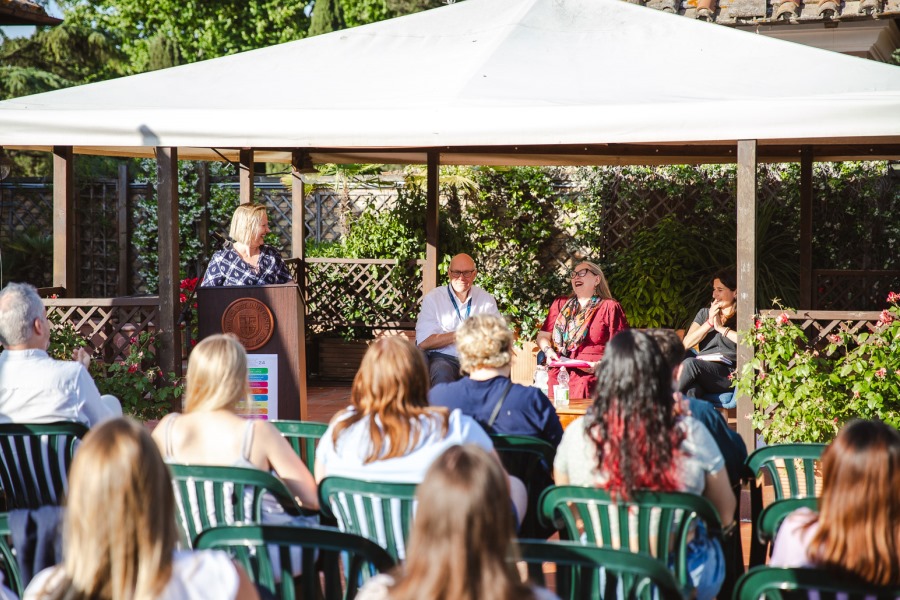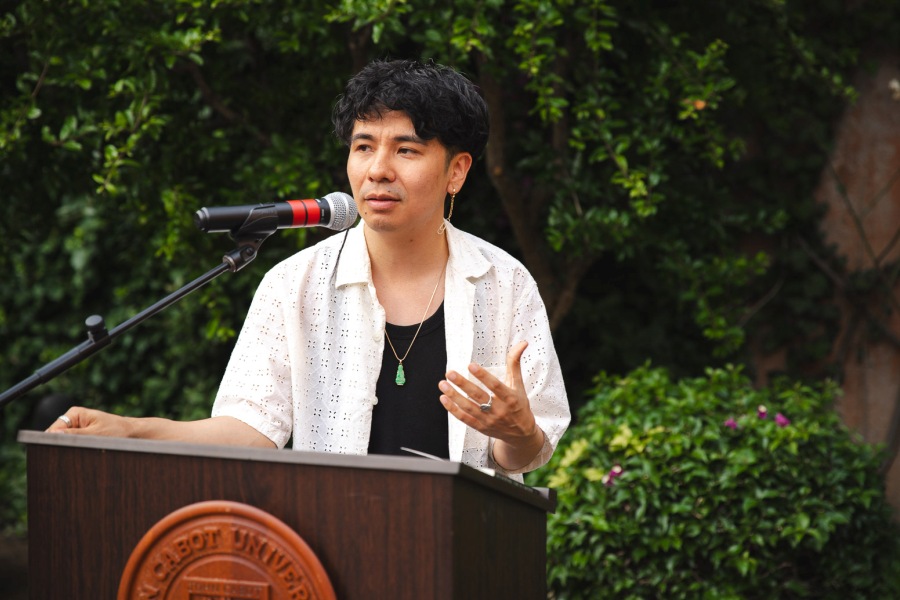JCU Welcomes Alessandra Ruffino for a Discussion on Jean Dubuffet
On November 7, 2022, John Cabot University welcomed Alessandra Ruffino, editor and translator of Jean Dubuffet. Piccolo manifesto per gli amatori d’ogni genere, (Jean Dubuffet. Small Manifesto for Connoisseurs of All Genres). Published in 2021 by Allemandi, the book is a new Italian edition of the first collection of writings by the French painter and sculptor Jean Dubuffet (1981-1985), one of the most provocative figures in postwar modern art. The event, held in Italian, was organized by the Department of Modern Languages and Literature and moderated by JCU French professor Catherine de Montalembert.

From left: Luciana D’Arcangeli, Anna Mauceri Trimnell, Catherine de Montalembert, Alessandra Ruffino, Federica Capoferri, Mario Mei, and John D’Arrigo
Alessandra Ruffino is a research consultant and editor with a Ph.D. from the University of Turin. She has published essays on the relationships between literature and the arts and edited several seventeenth-century texts. Her books include Ideogrammi per un viaggio nell’anima in Barocco (Aragno, 2010), Vanitas vs. Veritas Caravaggio, il liuto, la caraffa e altri disincanti (Allemandi, 2013), and Mollino fuoriserie (Aragno, 2015).
Ruffino took the audience on a journey through the life and works of Dubuffet, who challenged traditional standards of beauty, aiming for a more authentic and visceral approach to art. Many of his subjects were from everyday life: from the crowded subway to people simply walking down the street. He began to experiment with various materials such as stones, sand, plaster, and glass to create different textures, resulting in his series Hautes Pâtes, Materiologies, Texturologies, Assemblages, and others during the 1950s. The series was controversial in the art scene at the time and Dubuffet received negative feedback from French critics at the time.
Between 1945-48 after several inspiring trips to North Africa, Dubuffet launched what is known as Art Brut, or raw art, a term referring to art that operates outside of the aesthetic norm and could be created by anyone. Ruffino noted that for Dubuffet art is a “feast of the spirit” and anyone could create, understand, and enjoy it.
In 1962, what started as a simple doodle while the artist was on a long telephone call, grew into a collection of art known as L’Hourloupe, developed between 1963 and 1972. With the addition of blue, red, and white paint to his designs, Dubuffet transformed his pen doodles from drawings to paintings, to sculptures, to elastic figures and architecture. The collection has been on display in museums all over the world and the artist gained international fame and recognition.
The presentation included a discussion of the techniques and strategies used for translating texts from French to Italian and the means for rendering the intimate relationship between the written word and images.
(Mary Curran)





